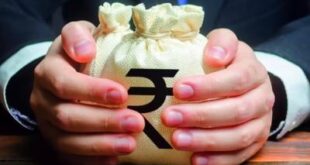Although the world is moving towards a fully digital ecosystem, currency notes and coins continue to be widely used. It may take several years to completely replace physical currency notes with digital currency. As everything produced on this planet has a cost associated with it, we often wonder how much does it cost to print currency notes. For answers, let’s take a quick look at production cost of US dollars of various denominations.
- $1 and $2 – Per note cost of printing $1 and $2 currency notes is 6.2 cents. If one million $1 and $2 notes are to be printed, the cost will be $62,000.
- $5 and $10 – Per unit cost of printing $5 and $10 notes is 10.8 cents. For a million such notes, total cost will be $108,000.
- $20 – Per unit cost of printing $20 note is 11.2 cents. A million $20 notes will cost $112,000.
- $50 – Per unit cost of printing $50 note is 11 cents. For a million, the cost will be $110,000.
- $100 – Per unit cost of printing $100 note is 14 cents. To print one million notes, total cost will be $140,000.
These numbers indicate the real value of currency that you have. The cost of printing currency includes various expenses such as banknote development, currency paper cost, fixed and variable printing cost, transportation cost, etc.
Advanced machinery is used in production of currency notes, which entails expenses in their repair and maintenance. Moreover, all the people involved in currency production need to be paid salaries. All these costs are factored in to calculate the cost of printing currency notes.
The numbers above reveal another interesting aspect, as to why certain currency notes are more expensive to print. It may be due to multiple factors such as overall quantity of printed notes. As cost includes both fixed and variable components, cost will depend on the total quantity of notes printed.
Another reason could be the level of security features embedded in the note. For example, the $100 note has a lot more security features in comparison to $1 and $2 notes. To give you an idea, $100 note has security features such as raised printing, microprinting, special paper with red and blue security fibers, federal reserve system seal, treasury seal, gold numeral 100, symbols of freedom and portrait of Benjamin Franklin.
Enhanced security features make it difficult for counterfeiters to produce original looking currency. As printing fake currency is expensive even for counterfeiters, they usually choose to print higher denomination currency notes. That’s why $20, $50 and $100 currency notes have higher number of security features. US dollar is accepted globally, which makes it all the more important to make it safe and secure.
 Newspatrolling.com News cum Content Syndication Portal Online
Newspatrolling.com News cum Content Syndication Portal Online





